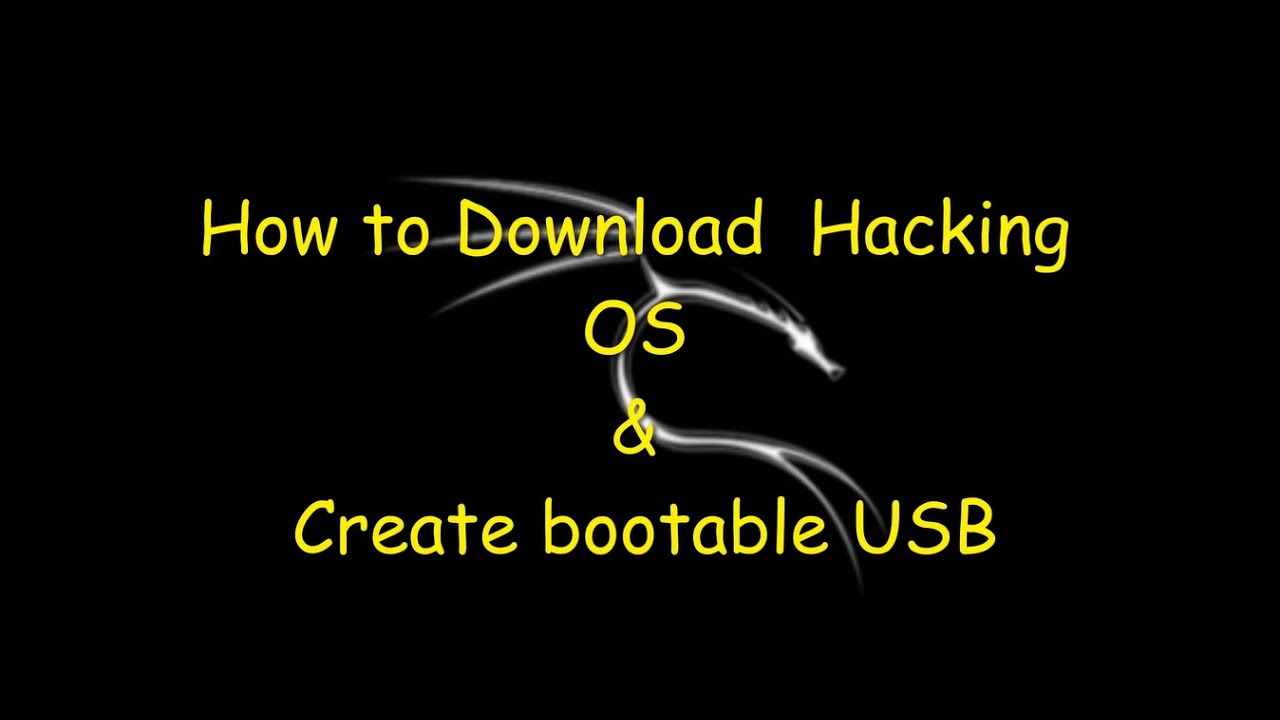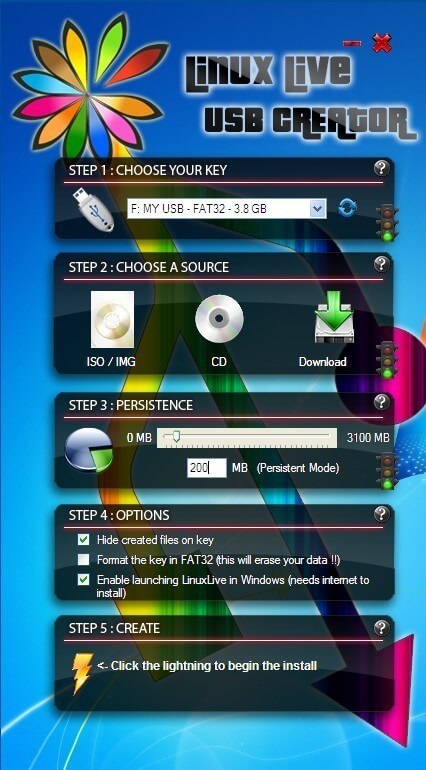

- #Making a bootable kali linux usb how to#
- #Making a bootable kali linux usb install#
- #Making a bootable kali linux usb portable#
- #Making a bootable kali linux usb iso#
- #Making a bootable kali linux usb free#
#Making a bootable kali linux usb iso#
…where is the name of your ISO file, and /dev/sdb is the name of the device you identified in the step above. From here, you’ll want to issue the following command: dd if= of=/dev/sdb bs=512k If you haven’t already, cd to the directory where you downloaded the latest Kali ISO image. In this example I’ve downloaded Kali 2018.2 to the /root/Downloads directory. Be sure you’re discovering the name of the correct drive, as we’ll soon overwrite its entire contents with the contents of the Kali ISO. My second disk, /dev/sdb, is roughly 28.7GB in size, so I know that’s my 32GB USB drive. Typically /dev/sda will be the first disk in your system, followed by sdb, sdc, and so on. I’m running this in a virtual machine, and 20GB is the amount I allocated to my virtual hard disk file. As you can see in this example, /dev/sda is the first disk in my system and is a 20GB disk. …to list the partitions on all of our storage devices.
#Making a bootable kali linux usb how to#
In this tutorial I’m going to show you how to set up persistence on a Kali USB device, and as a bonus, our persistent volume will also be encrypted so if you lose the device or if it’s stolen, none of the information stored on your encrypted persistent volume can be compromised. When using a bootable Kali USB device without persistence, Kali returns to its “out of the box” state every time you boot the USB device.
#Making a bootable kali linux usb install#
Persistence allows us to customize and configure desktop and user options, install additional software, perform updates, save files from a target desktop to our persistent environment, transport files from the Kali live environment to different machines, perform system updates to the live environment and carry them with us, install persistent software, and more. Azure vs.Kali Live USB is great, but doesn’t it suck that all of the changes that you make in the live boot environment are wiped when you shut it down? That doesn’t have to be the case, thanks to a feature called persistence.
#Making a bootable kali linux usb free#

Coming Soon: Microsoft Defender for Office 365 Changes.Windows 11 Alpha-Themed Malware Attacks.Finding Last Login Date for an Active Directory User Account.Limit SMB Traffic in Windows Environments.Once you’ve downloaded and verified your chosen Kali ISO file, you use dd to copy it over to your USB stick.Īzure Books Career Cybersecurity Internet Leadership Linux Programming Project Management SQL Server Technology Windows Recent Posts OS X is based on UNIX, so creating a bootable Kali Linux USB drive in an OS X environment is similar to doing it on Linux. In OS X, you will use the dd command, which is already pre-installed on your Mac.Ĭreating a Bootable Kali USB Drive on OS X.You’ll probably select the 64-bit version (Kali Linux 64-Bit ) in most cases. A verified copy of the appropriate ISO image of the latest Kali build image for the target system.In order to do this, we first need to create a bootable USB drive which has been set up from an ISO image of Kali Linux. It’s optionally persistent - you can decide to configure your Kali Linux USB drive to have persistent storage, so your data and configuration changes are saved across reboots.

#Making a bootable kali linux usb portable#


 0 kommentar(er)
0 kommentar(er)
